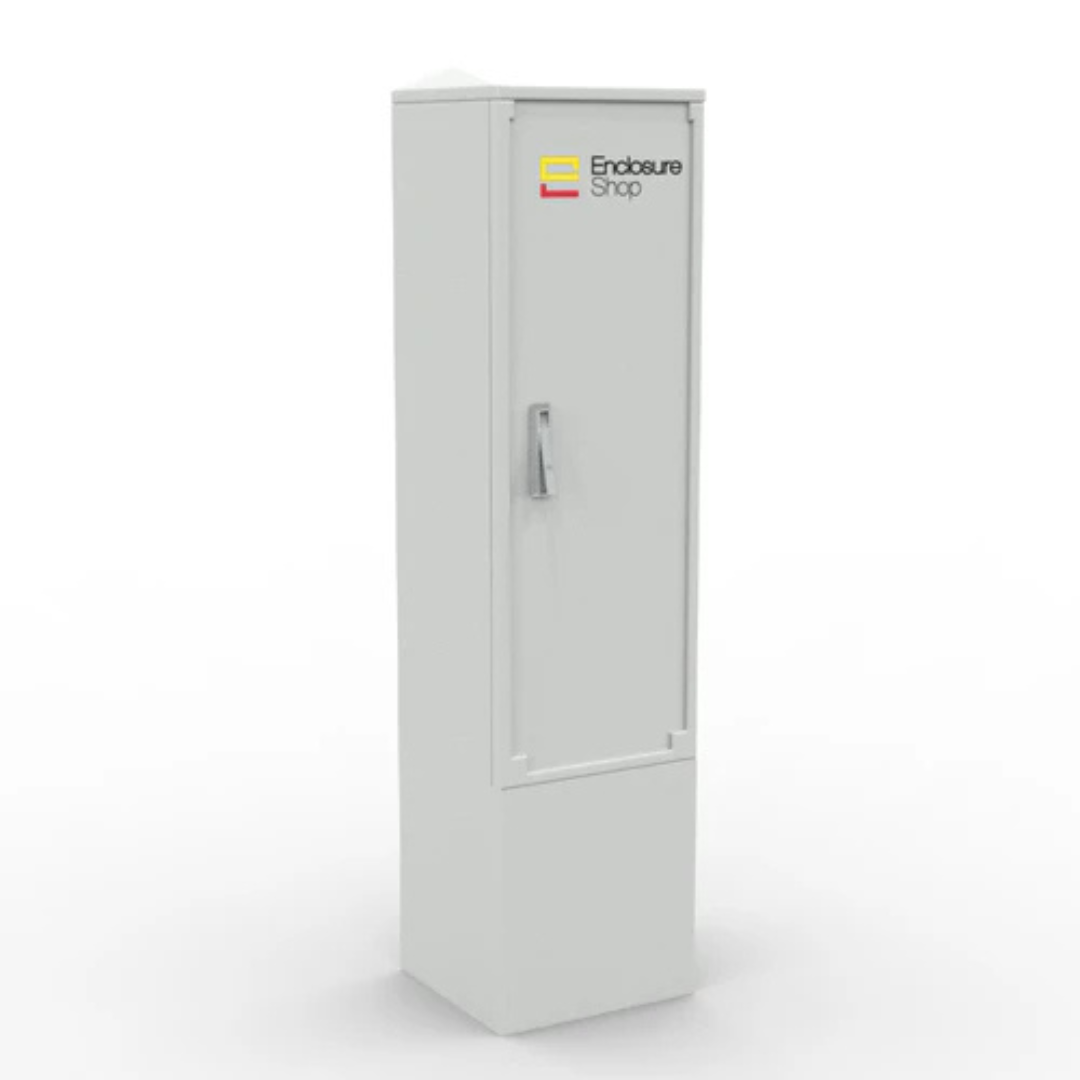When it comes to protecting electrical systems, the type of enclosure or cabinet you choose can make a big difference. Whether it’s for outdoor use, industrial applications, or commercial settings, selecting the right material for your cabinet is essential. Two of the most common materials used today are steel and GRP (Glass Reinforced Plastic).
In this guide, we’ll take a close look at steel electrical cabinets and GRP electrical enclosures, comparing their features, benefits, and best use cases. We’ll also touch on stainless steel electrical enclosures and metal electrical cabinets in general. If you're planning an electrical installation, this guide will help you make an informed choice.
What Are Electrical Cabinets?
Before we dive into the comparison, let’s quickly understand what electrical cabinets are.
An electrical cabinet (also called an enclosure) is a protective box used to house electrical equipment, control panels, switches, circuit breakers, and more. Its job is to shield the internal components from dust, moisture, vandalism, and weather.
The material of the cabinet determines how well it can handle different environments. That’s why choosing between steel and GRP is such an important decision.
What Are Steel Electrical Cabinets?
Steel electrical cabinets are made from either mild steel or stainless steel. They’re widely used in industrial settings, manufacturing plants, and commercial buildings.
Types of Steel Used
Mild Steel
- Painted or powder-coated for protection
- Strong and durable
- Prone to rust if not coated
Stainless Steel
- Naturally resistant to rust and corrosion
- Ideal for harsh environments
- Often used in food processing, chemical plants, or outdoor settings
What Are GRP Electrical Enclosures?
GRP stands for Glass Reinforced Plastic, also known as fiberglass. It’s a lightweight, non-metallic material made by combining plastic with fine glass fibers.
GRP electrical enclosures are becoming more popular due to their corrosion resistance, lightweight structure, and long lifespan.
Key Differences Between Steel and GRP Cabinets
Let’s compare steel and GRP across different categories to help you decide which is best for your project.
1. Corrosion Resistance
- GRP Cabinets
- Excellent resistance to corrosion, saltwater, chemicals, and moisture.
- Ideal for coastal areas or chemical industries.
- Won’t rust over time.
- Steel Electrical Cabinets
- Prone to rust if exposed to moisture unless coated or made of stainless steel.
- Stainless steel electrical enclosures offer better corrosion resistance but are more expensive.
2. Strength and Durability
- Steel Cabinets
- Extremely strong and hard.
- Good for areas where the cabinet might get knocked or bumped.
- Can handle high-impact loads.
- GRP Cabinets
- Not as strong as steel, but still durable.
- Can crack under extreme impact.
- Good enough for most medium-duty applications.
3. Weight
- GRP Electrical Enclosures
- Very lightweight
- Easier and faster to install
- Lower shipping and handling costs
- Metal Electrical Cabinets
- Heavier, especially stainless steel
- Requires more effort during installation
4. Maintenance
- GRP Cabinets
- Very low maintenance
- No need to paint or recoat.
- Resistant to dents and scratches
- Steel Cabinets
- Need to be checked for rust or scratches
- Coatings may peel over time
- Stainless Steel Electrical Enclosures require less maintenance than mild steel
5. Lifespan
- GRP Enclosures
- Long lifespan in outdoor and corrosive environments
- Can last 25+ years with little wear
- Steel Enclosures
- Very long-lasting if kept in dry conditions or made from stainless steel
- Prone to corrosion in coastal or humid places unless properly protected
6. Temperature Resistance
- Steel
- Performs well in high temperatures
- Non-flammable
- GRP
- Heat-resistant but can weaken at very high temperatures
- Flame-retardant options are available
7. Security
- Metal Electrical Cabinets
- Tough to break into
- Ideal for high-security areas
- Better for vandal-prone zones
- GRP Cabinets
- Secure, but less strong than metal
- More prone to damage from heavy tools
8. Electrical Insulation
- GRP
- Naturally non-conductive
- Adds a layer of safety around live wires
- No grounding required
- Steel
- Conductive
- Needs proper earthing
- Can pose risks if not grounded properly
Use Cases for Each Type
Let’s look at where each cabinet type works best:
✅ Best Uses for GRP Cabinets
- Coastal areas with salty air
- Chemical or water treatment plants
- Outdoor applications
- Remote areas (easy to transport and install)
- Projects with tight budgets
✅ Best Uses for Steel Cabinets
- Factories with heavy machinery
- High-security buildings
- Areas with extreme heat
- Indoor industrial use
- Projects needing extra strength
Cost Comparison
- GRP Enclosures
- Usually more affordable upfront
- Lower installation and shipping costs
- Fewer long-term maintenance expenses
- Steel Cabinets
- More expensive (especially stainless steel)
- Higher maintenance if in corrosive environments
- Longer lifespan in clean, indoor spaces
Customization & Design
Both materials can be customized in terms of:
- Size and shape
- Mounting options
- Doors and locks
- Cable entry points
- Ventilation options.
Environmental Impact
- GRP
- Not biodegradable
- Some options are recyclable
- Long life reduces need for frequent replacements
- Steel
- 100% recyclable
- Has a higher carbon footprint in manufacturing
- Stronger push toward using recycled metals
Final Thoughts: Which One Should You Choose?
There’s no one-size-fits-all answer. Your choice between GRP Cabinets and Steel Electrical Cabinets depends on your project’s location, budget, and safety requirements.
Choose GRP Electrical Enclosures if:
- You’re installing outdoors or near the sea
- You want a lightweight and non-conductive option
- You’re looking for low-maintenance materials
- Your budget is limited
Choose stainless steel electrical enclosures or Metal Electrical Cabinets if:
- You need maximum durability and strength
- The environment has high heat or physical risks
- Vandalism is a concern
- You're working in a clean indoor space or industrial setting





Comments